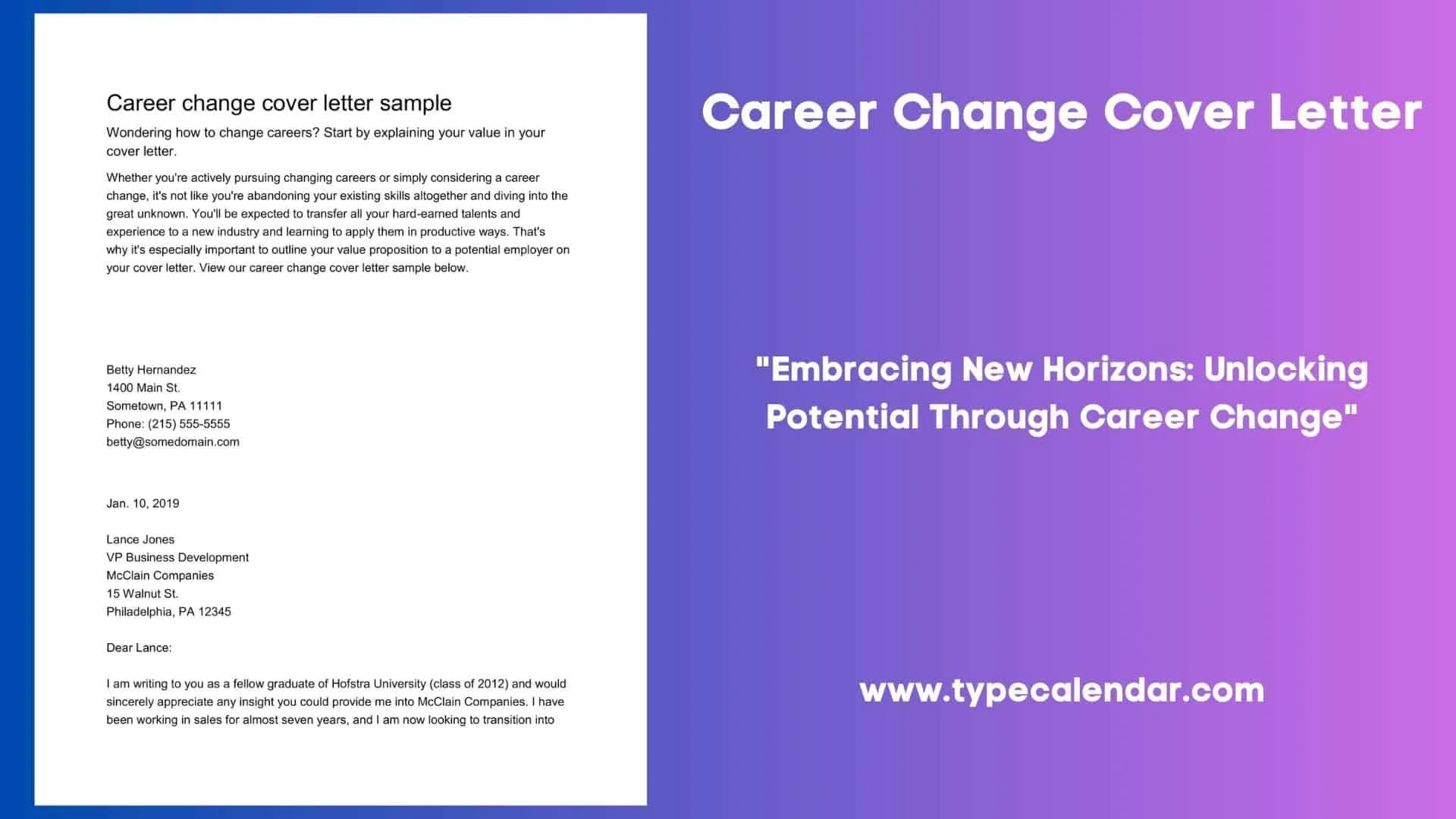Changing careers can be an exciting yet daunting experience. One of the most crucial tools in your job search arsenal is a well-crafted cover letter. Unlike a resume, which provides a factual overview of your experience, a cover letter allows you to tell your story, explain your career change, and convince a potential employer that you’re the right fit. This guide will walk you through the essential steps to write a compelling cover letter that highlights your strengths and addresses the challenges of a career transition, giving you the best chance of landing your dream job.
Why a Cover Letter Matters for Career Changers
A cover letter is more than just a formality; it’s your opportunity to proactively address the elephant in the room—your career change. It provides context, allowing you to explain why you’re pivoting and how your skills are still relevant. This is particularly important when your experience doesn’t directly align with the new role. A strong cover letter demonstrates your self-awareness, initiative, and ability to articulate your value proposition. It sets the stage for your resume and encourages the hiring manager to delve deeper into your qualifications. A well-written cover letter can significantly increase your chances of getting an interview, especially when you’re changing career paths.
Highlighting Transferable Skills
One of the most effective strategies for career changers is to focus on transferable skills. These are the abilities and competencies you’ve developed in previous roles that are applicable to your desired field. Identifying and emphasizing these skills can bridge the gap between your past experience and the requirements of your new role. It demonstrates that you possess the necessary capabilities, even if your industry experience is different. These skills often include communication, problem-solving, leadership, project management, and analytical abilities. By highlighting these skills, you show potential employers that you can quickly adapt to new environments and contribute effectively from day one.
Identifying Your Key Skills
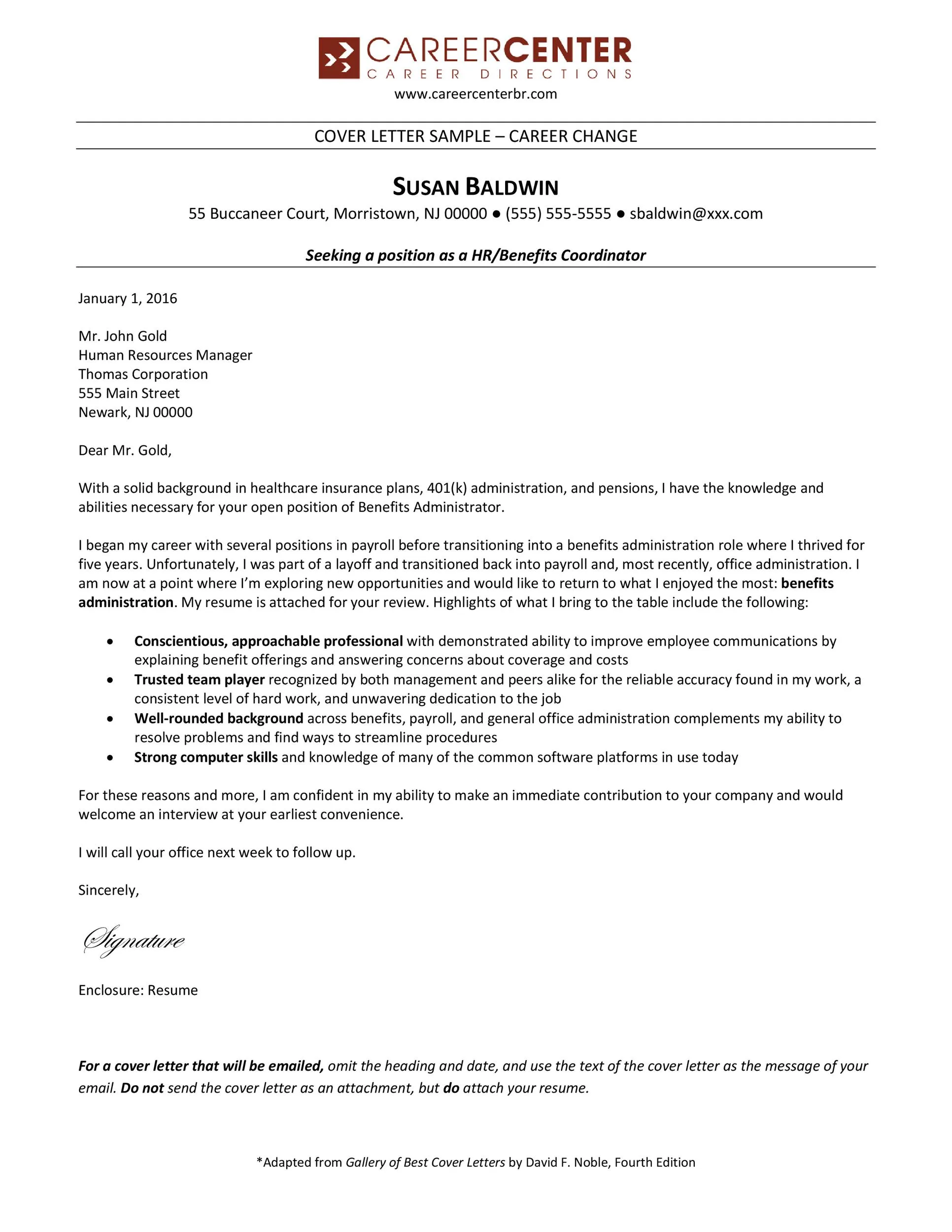
Start by creating a list of your key skills. Think about the tasks you excelled at in your previous roles. What did you enjoy doing? What came easily to you? Consider both hard skills (technical abilities) and soft skills (interpersonal and personal attributes). For example, if you’re transitioning from teaching to project management, highlight skills like communication, organization, and time management. If you’re moving from sales to marketing, emphasize your ability to persuade, build relationships, and analyze data. Research the requirements of the jobs you’re applying for and match your skills accordingly. The more you can align your skills with the job description, the stronger your cover letter will be.
Showcasing Accomplishments
Instead of simply listing your job duties, showcase your accomplishments. Use the STAR method (Situation, Task, Action, Result) to provide specific examples of how you’ve used your skills to achieve positive outcomes. For instance, rather than saying “Managed a team,” describe how you “Led a team of five, resulting in a 15% increase in project completion rates.” Quantify your achievements whenever possible. Numbers speak volumes and demonstrate the impact you’ve made in previous roles. This is an excellent way to prove the value of your transferable skills and make a compelling case for your candidacy. This can significantly set you apart from other applicants, especially those with direct experience.
Addressing the Career Change
The most significant hurdle for career changers is often addressing the career change itself. Ignoring it can raise doubts in the hiring manager’s mind. Acknowledge the change directly and explain your rationale. Honesty and clarity are key. Explain why you’re transitioning, what excites you about the new field, and how your past experience has prepared you for this new role. Frame your career change positively, focusing on your growth, new skills you’ve acquired, and the unique perspective you bring. Don’t apologize for your previous choices, but rather emphasize how they’ve shaped your capabilities and aspirations.
Explaining the Reason for Change
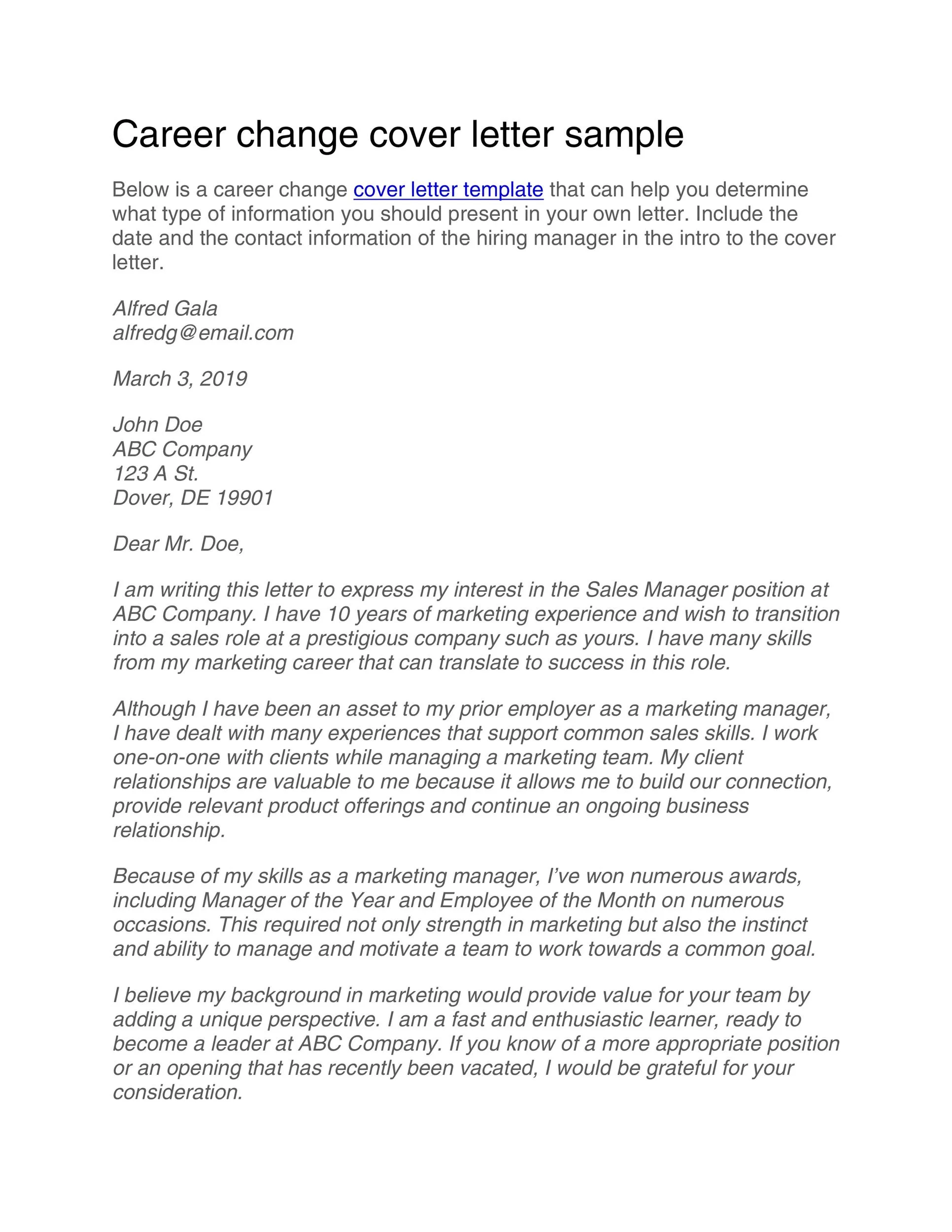
Be upfront about why you’re changing careers. Were you seeking more challenging work, better work-life balance, or a different industry? Whatever the reason, express it concisely and authentically. For instance, you might write, “My experience in [previous field] has provided a strong foundation in [relevant skills], and I’m now eager to apply these skills in the dynamic environment of [new field].” Avoid negative comments about your previous employer or industry. Instead, focus on the positive aspects of your new career path and what you hope to achieve. Your reasoning should align with the values and goals of the company to which you’re applying.
Demonstrating Enthusiasm and Passion
Show genuine enthusiasm for the new career and the specific role you’re applying for. Explain why you’re interested in the company and what attracts you to the position. Passion is contagious, and it can compensate for a lack of direct experience. Research the company’s mission, values, and recent projects. Mention specific aspects that resonate with you and demonstrate your understanding of their work. Close the cover letter by reiterating your interest and expressing your eagerness to contribute. Your enthusiasm will make you more memorable and increase your chances of getting an interview. This enthusiasm is what will separate you from other applicants.
Structuring Your Cover Letter
A well-structured cover letter is easy to read and highlights your key qualifications. It typically includes an introduction, body paragraphs, and a conclusion. Each section should serve a specific purpose and contribute to the overall message. A clear structure helps the hiring manager quickly understand your career change and assess your suitability for the role. Using clear formatting, concise language, and well-defined sections ensures that your cover letter makes a strong first impression and compels the reader to learn more.
Header and Introduction
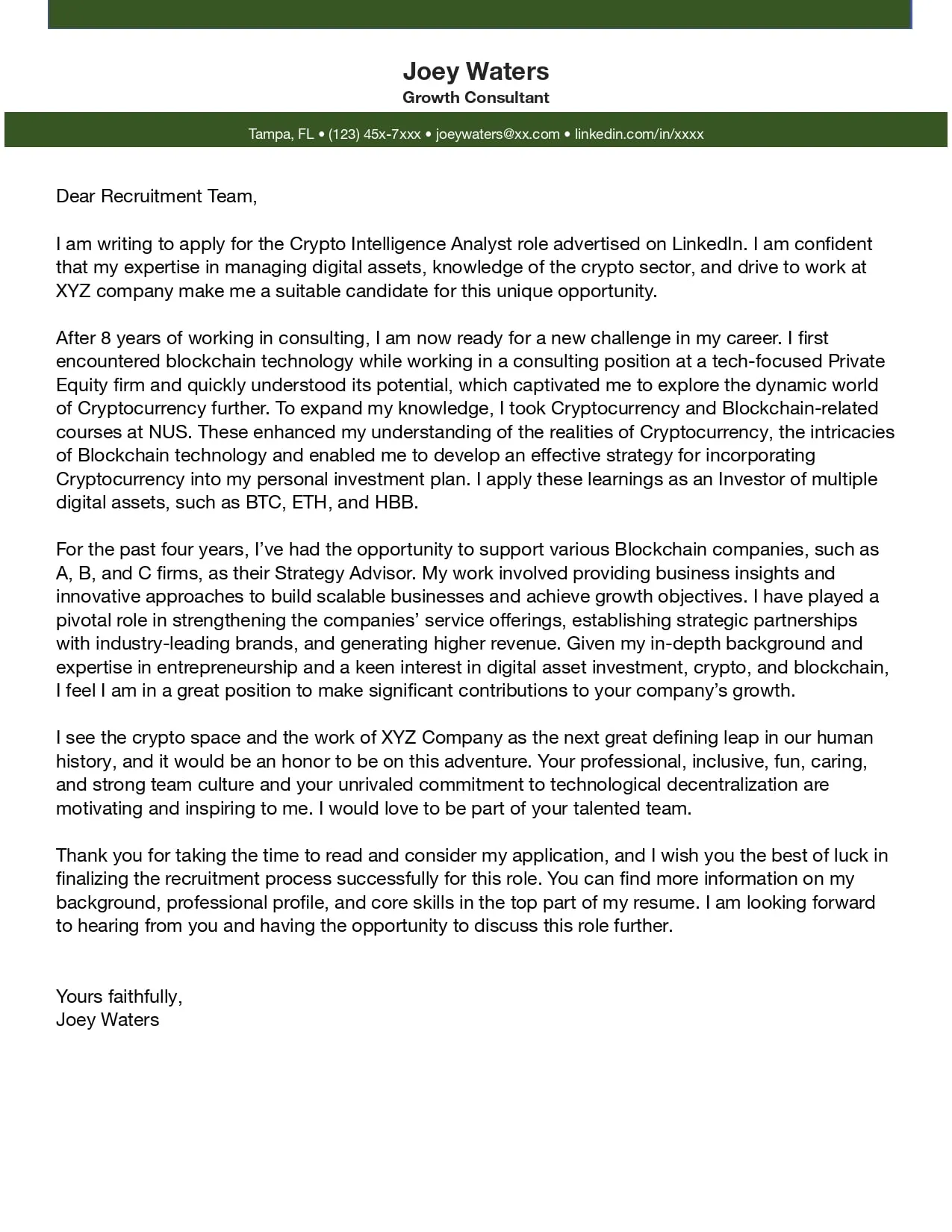
Start with a professional header that includes your contact information. Address the hiring manager by name whenever possible; it shows you’ve done your research and are genuinely interested. The introduction should state the position you’re applying for and briefly mention how you learned about it. Briefly introduce yourself and then immediately mention the career change and your interest in the role. This immediately grabs their attention and sets the tone for the rest of the letter. Keep it concise and focused, setting the stage for the more detailed discussion in the body paragraphs.
Body Paragraphs
Use the body paragraphs to elaborate on your transferable skills, accomplishments, and reasons for the career change. Each paragraph should focus on a specific point and be supported by examples. Break down your experience into manageable segments that illustrate your key qualifications. Connect your skills and experiences to the job requirements mentioned in the job description. Maintain a clear and concise writing style, using active voice and avoiding jargon. The body paragraphs are where you provide concrete evidence of your value and show why you’re a good fit for the role.
The Closing
In the closing paragraph, reiterate your interest in the position and the company. Thank the hiring manager for their time and consideration. Include a call to action, such as expressing your availability for an interview. Proofread carefully and make sure the closing is enthusiastic and professional. Your closing statement should reinforce your value proposition and leave a positive lasting impression, urging the reader to contact you. Keep it brief and focused, ensuring that it complements the rest of the letter.
Tailoring Your Cover Letter
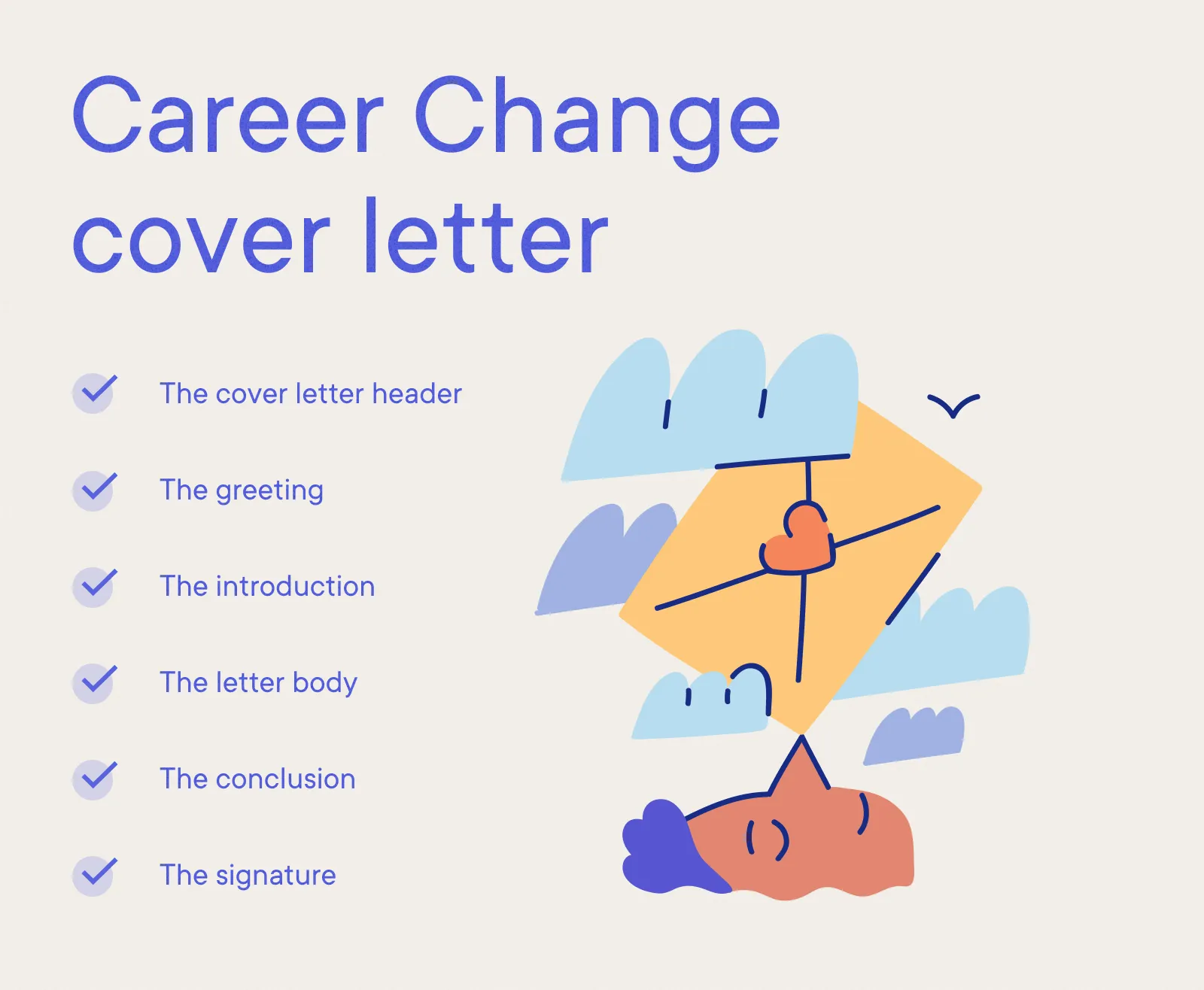
A generic cover letter is unlikely to impress hiring managers. Tailor each cover letter to the specific job and company you’re applying for. Research the company, analyze the job description, and highlight the skills and experiences that align with the requirements. This personalized approach demonstrates your genuine interest and attention to detail. Customize your cover letter to address the specific needs of each employer and showcase how you can contribute to their success. Avoid using a template without making significant changes to suit the role.
Researching the Company
Before writing your cover letter, research the company extensively. Visit their website, read their “About Us” section, and explore their social media profiles. Understand their mission, values, and recent projects. Look for information that aligns with your own goals and aspirations. This research enables you to personalize your cover letter and demonstrate your knowledge of the company’s culture and objectives. The more you know about the company, the better you can tailor your letter and show that you genuinely care about joining their team.
Matching Skills to Job Requirements
Carefully analyze the job description. Identify the key skills, qualifications, and experiences the employer is seeking. Then, review your skills and experience and identify the matches. In your cover letter, explicitly state how your skills align with the job requirements. Provide specific examples to show that you can perform the tasks outlined in the description. Use the same keywords and phrases from the job description. This will help your cover letter get past Applicant Tracking Systems (ATS) and grab the attention of the hiring manager.
Formatting and Proofreading
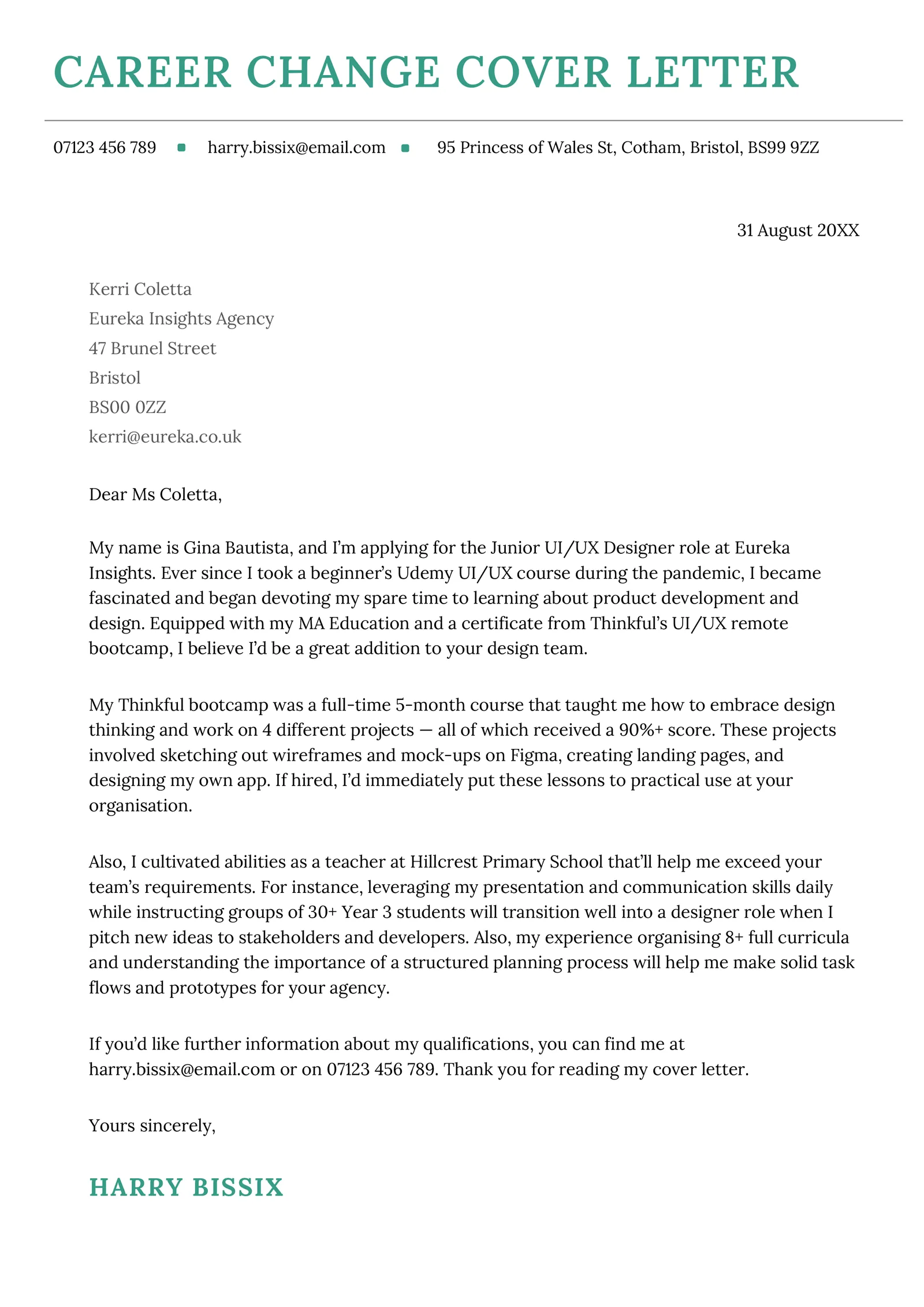
Formatting and proofreading are critical. A cover letter full of errors or poorly formatted is a red flag. Choose a professional font, such as Times New Roman, Arial, or Calibri, and maintain consistent formatting throughout. Proofread your cover letter carefully for grammar, spelling, and punctuation errors. Ask a friend or career counselor to review it as well. Errors can undermine your credibility and make it difficult for the hiring manager to take you seriously. Your cover letter should be polished, well-formatted, and free of mistakes, showcasing your attention to detail.
Cover Letter Examples and Templates
Leveraging examples and templates can provide valuable guidance, especially when you are new to writing cover letters for career changes. There are many online resources that provide cover letter examples tailored to different industries and career transitions. While these resources can be helpful, make sure to adapt the templates to your specific situation and customize them to fit each job application. Using a template as a starting point and then adding your personal touch ensures that your cover letter stands out from the crowd and reflects your unique skills and experiences.
Using Online Resources
Numerous websites offer cover letter templates and examples. These resources can provide you with a framework and inspiration. Some popular websites include Indeed, LinkedIn, and various career counseling sites. Look for examples that match your new industry or the type of role you’re seeking. Use these examples as a starting point and modify them to reflect your skills, experience, and the specifics of the job you’re applying for. Ensure the tone and language align with your personality and the company’s culture. Remember that your cover letter must be unique to you.
Adapting Sample Letters
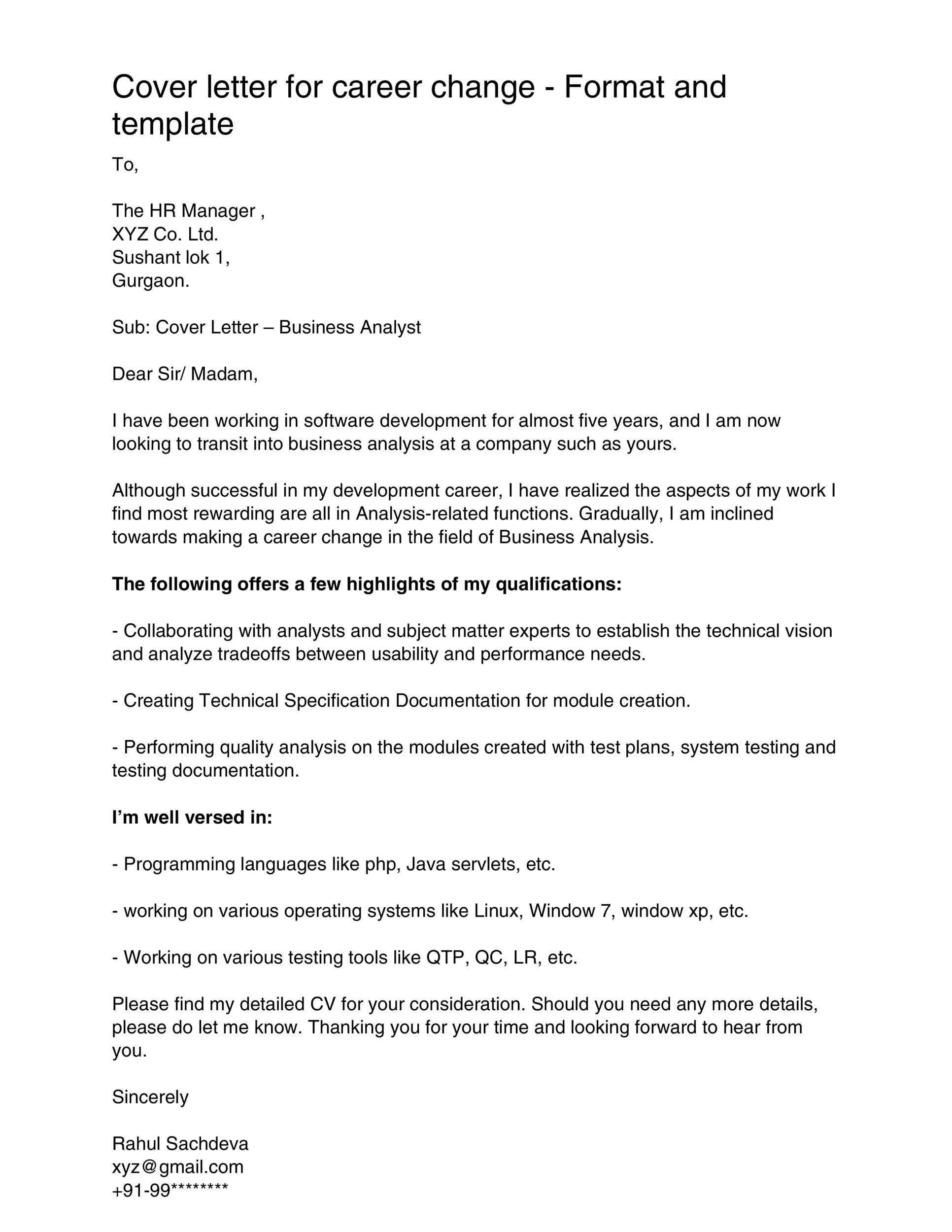
When adapting sample letters, personalize them. Don’t simply copy and paste. Customize the language to reflect your career change and the requirements of the job. Replace generic phrases with specific examples of your accomplishments and skills. Tailor the content to highlight your transferable skills and the reasons for your career change. The more you customize the sample letter, the more effective it will be. Your goal is to create a unique document that clearly communicates your value proposition and resonates with the hiring manager.
Final Thoughts
Writing a cover letter when changing careers requires careful planning, thoughtful execution, and a focus on showcasing your transferable skills. By following the guidelines in this article, you can create a compelling cover letter that addresses the challenges of a career transition, highlights your strengths, and increases your chances of getting an interview. Remember to be honest, enthusiastic, and specific in your writing. Tailor each cover letter to the specific job and company, and always proofread carefully. With a well-crafted cover letter, you can effectively communicate your value and take a significant step toward your dream job. Your career change is possible with a strong, personalized cover letter.
